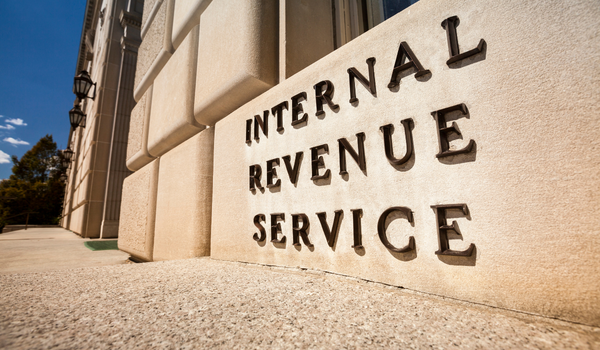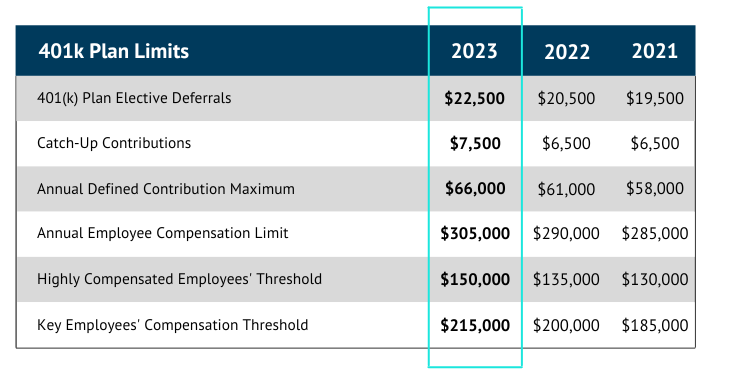IRS Announces 401(k) and Retirement Plan Limits For 2023
Bottom Line Up Front
- The maximum 401(k) contribution in 2023 is $22,500, a $2,000 boost from 2022’s contribution limit
- 401(k) catch-up contributions increased from $6,500 to $7,500
- Maximum annual benefit limits for defined benefit plans will be $265,000, an increase of $20,000 from 2022.

The IRS recently released the new qualified retirement plan limits for 2023 and they’re the most significant increases we’ve seen in a while.
Starting next year, 401(k) employee contributions will max out at $22,500, a $2,000 boost from the current 2022 contribution limit of $20,500. Plan participants over the age of 50 years will be able to contribute an additional $7,500 next year, an increase of $1,000 from the current catch-up contribution limit.
The tables below show key 2023 limits side-by-side with those in effect currently for 2022. Inflation is at a 40-year high, which is causing the significant increases you see below for most contribution limits in 2023. If you’re a financial advisor, these charts are a great way to start conversations with clients on plan redesign, tax-efficient combo plans, talent retention, and recruitment for the year ahead.
What are the new 401(k) plan limits for 2023?

What are the 2023 limits for non-401(k) related plans?
Download the full whitepaper here: 401(K) Plan Limits & Non-401(k) Related Limits
Bonus: 2023 HSA and HDHP Limits
2023 IRA Contribution Limit Increase
Contributions to both traditional IRAs and Roth IRAs will increase in 2023 as well to $6,500 – that’s a $500 increase from the current limit. The catch-up contribution will remain at $1,000.
If you’d like a closer look at these and other retirement-related limits for 2023, please refer to IRS Notice 2022-55.
Advisors, if you’re interested in a more in-depth retirement plan comparison chart or a free retirement plan review, you can reach one of our consultants here.
Whenever you’re ready, here are three ways we can help:
Categories:
Share